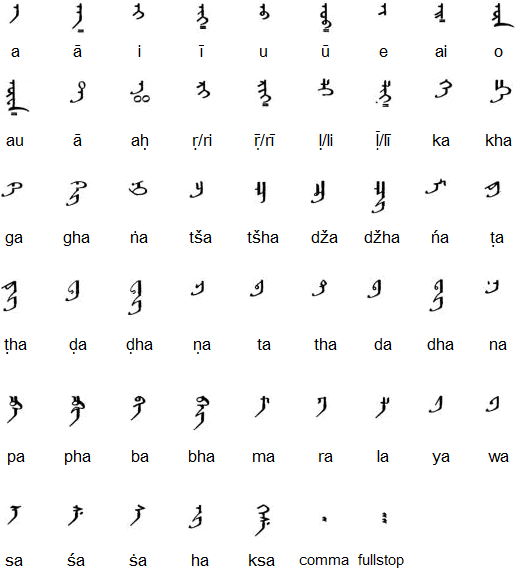The Galik alphabet is a version of the traditional Mongolian script devised in 1587 by Ayuush Güüsh (Аюуш гүүш), a translator and scholar who was inspired by the third Dalai Lama, Sonam Gyatso (བསོད་ནམས་རྒྱ་མཚོ་). Ayuush Güüsh added extra letters and used them when transcibing words from Sanskrit and Tibetan in Mongolian religious texts, and later added laters for Chinese sounds as well. Some of these letters are still in use today for writing foreign names.
Notable features
- Type of writing system: alphabet
- Direction of writing: left to right in vertical columns running from top to bottom.
- Most letters have several different forms: initial, medial and final, which are used at the beginning, middle and end of a word respectively. The vowels also have isolated forms.
- Some letters have different shapes depending on which vowel comes before and/or after them.
- Used to write: Sanskrit, Tibetan and Chinese words in Mongolian texts
Galik alphabet

Links
Information about the Galik alphabethttp://en.wikipedia.org/wiki/Galik_alphabet
http://www.chinaknowledge.de/History/Yuan/yuan-literature.html
http://scriptsource.org/cms/scripts/page.php?item_id=entry_detail&uid=znh25xbvgv







.jpg)




.jpg)
.jpg)





0 comments:
Post a Comment
Note: Only a member of this blog may post a comment.